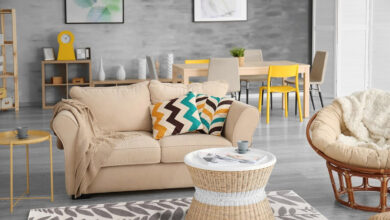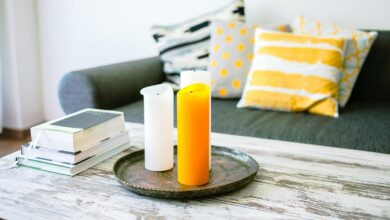
6 Ways to Incorporate Industrial Design Into Your Home
- #1 - Start with a wall
- #2 - Think of an industrial bedhead
- #3 - Be creative with the shelving
- #4 - Choose an industrial color scheme
- #5 - Mix and match materials and textures
- #6 - Finish it all off with the right light
Industrial design has taken the world by storm in recent years, and we are all in awe of the amazing converted lofts, abandoned industrial spaces, and exposed brickwork we see all over Pinterest and Instagram.
However, knowing how to add an industrial flair to your home without actually buying a derelict building can be a real challenge.
Let’s look at six ways to go about it:
#1 – Start with a wall
While you may not have ready access to exposed brick, you can still turn a wall into a feature piece in your home.
You can use interesting woodwork or wooden paneling, a wall-to-wall wallpaper with an intricate design, or even place some giant art pieces or wall maps on one wall to make it stand out and play off that industrial style.
Make sure you only do one feature wall per room, though, or even just one in the entire home, as you don’t want to create a jumbled and overcrowded effect.
#2 – Think of an industrial bedhead
If you’re looking to add a bit of an industrial feel to the bedroom, your bed can make for a great centerpiece and source of inspiration.
You can go for some industrial-inspired bedposts made from tin or iron, or you can go for a very crafty bedhead, again something made from a raw material you can customize.
Before you jump into the decorating part, think about the size of the bed you want, and only then choose the actual decorations and extra features, as you do want everything to match, to an extent.
#3 – Be creative with the shelving
You can easily turn boring shelves into something with an industrial vibe. You can go for timber and other mismatched wood elements, for raw industrial materials, or even elements of plumbing that can be a great way to jazz up a wall.
The odder the better, and remember that the shelves don’t need to match or be even, either.
As long as nothing slides off them, you’ll be fine.
#4 – Choose an industrial color scheme
Industrial design is often a lot about different shades of grey, and you can easily play with different neutral colors (from off-white and dove grey to gunmetal and near black) on your walls.
Before selecting a color, though, make sure you consider the natural lighting in the room, as rooms with less light could benefit from being of a lighter color too.
Another thing to consider is the furniture you will want in the room, so if you have plenty of warm pieces, you might want to think about the cool walls twice.
#5 – Mix and match materials and textures
Industrial design plays a lot with different colors and materials, using different textures and combinations in unexpected ways.
You can do the same by incorporating a lot of different kinds and shades of wood, adding some worn leather pieces and décor items to a room, using different tiles in your kitchen and bathroom, and playing with metal and vintage pieces on the walls and shelves.
While mismatched is what you’re going for, try to stick to some sort of theme, so that you don’t end up going overboard and creating a dizzying effect. Try to select one main overarching topic – color, material, era – and play from there.
#6 – Finish it all off with the right light
Industrial lighting is big, bold, and bright. After all, those huge loft spaces need to be lit with some large light sources, and you can easily apply the same principles to your home.
Look for large statement pieces that incorporate industrial materials, unusually shaped light bulbs, and powerful items that draw the eye. Warm lights usually work better than harsh cool lights in industrial spaces, as the dimness helps you achieve that all-important atmosphere.
Final thoughts
Incorporating industrial design into your home doesn’t need to be a challenge.
You can start with the larger pieces, like the walls or major pieces of furniture, and work your way down from there.
You may not be able to afford all the highest end brands, but the beauty of industrial design is that you can reach for a lot of recycled and vintage items you can find locally and revive.






